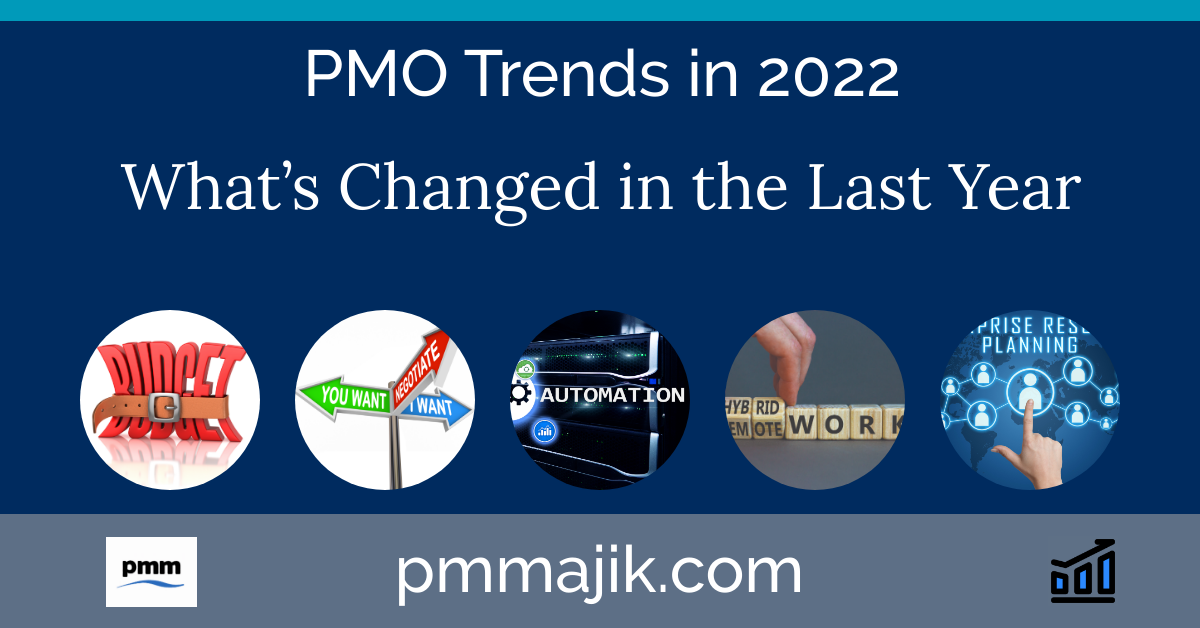The last year has seen plenty of change and development in the project management office (PMO) space. We’re going to look at the PMO trends we’ve seen in 2022 and how the sector has changed in that time.
Much of the world has seen the end of the worst of the pandemic, with few countries experiencing lockdowns at the end of 2022. However, with global events such as the ongoing conflict in Ukraine, stability has still not returned.
World events have had an impact on projects and project management. General advances in technology are also bringing about change at a fast pace. We’re going to look at five of the biggest trends in project management in the last year.
1. Budget tightening
Economic turbulence has affected all industries and sectors. Rising energy prices around the world and inflationary pressures have caused costs to spiral for many.
Plenty of companies are also experiencing major issues with chip shortages, causing new technology and other hardware to be delayed.
The effect on your PMO will be a tightening of your budget and demand for efficiencies. You’ll have felt pressure from above to get more out of a fixed or only slightly increased budget. With inflationary pressures building across the world, your costs will be higher, and likely the money you have to spend won’t go as far.
2. Project renegotiation
As the economic landscape has changed, you may have seen stakeholders and project owners want to change the scope and budgets for projects. Whether you work on an internal change programme or oversee projects for external clients, you’ve probably seen a drive for project change.
Some clients may want to see projects delivered faster so the efficiencies or increased profits can be realised sooner. Others may want to slow down or pause projects to reduce their costs.
Your PMO will need to keep on top of agreed changes, update the project charter as needed, change schedules, and make sure requirements are all relevant to the new project needs.
3. Drive towards automation
With the need for efficiencies, you will have probably seen a drive to automate as many tasks as possible. This is a logical step to be able to get more productivity out of the same resources.
Automation and the introduction of new tools bring about positive disruption to your PMO. As artificial intelligence becomes more accessible, it is being used by more PMOs to do scheduling and resource allocation.
The internet of things (IoT) has also meant it’s easier to manage remote and hybrid teams. Cloud technologies also help collaboration and are making teams work smarter, not harder.
4. Remote and hybrid working
Your team will have become much more used to working from home since it was forced on many businesses during lockdowns and associated pandemic restrictions.
Lots of PMOs have migrated to a fully remote or hybrid working model. PMOs leaders have had to learn to adapt their working practices to accommodate staff who want to work from home on different days and potentially even have more flexible hours.
It’s a positive way to give extra benefits to workers – while an inflation-matching pay rise might be a challenge for the business, flexible and remote working can compensate with less commuting and more convenience.
5. Tighter resource planning
A long-term effect of the pandemic that has been felt throughout 2022 is the decrease in the labour market. People have stopped working in large numbers and are looking for a job that better aligns with their lifestyle.
Your PMO will have struggled to find the right people during and since the pandemic. Finding enough qualified people to apply for jobs has been tough in the last year, and your projects may have been stretched because of this.
Gaps can be plugged with freelancers in the short term, and your office and the wider business needs to be looking into upskilling your current workforce.
2022 PMO trends
It has been a rocky year for businesses. The challenge of emerging from the pandemic has been compounded by global events pushing up prices and forcing changes to business plans. The 2022 PMO trends have seen a range of changes that have focussed on efficiencies and cost savings.






